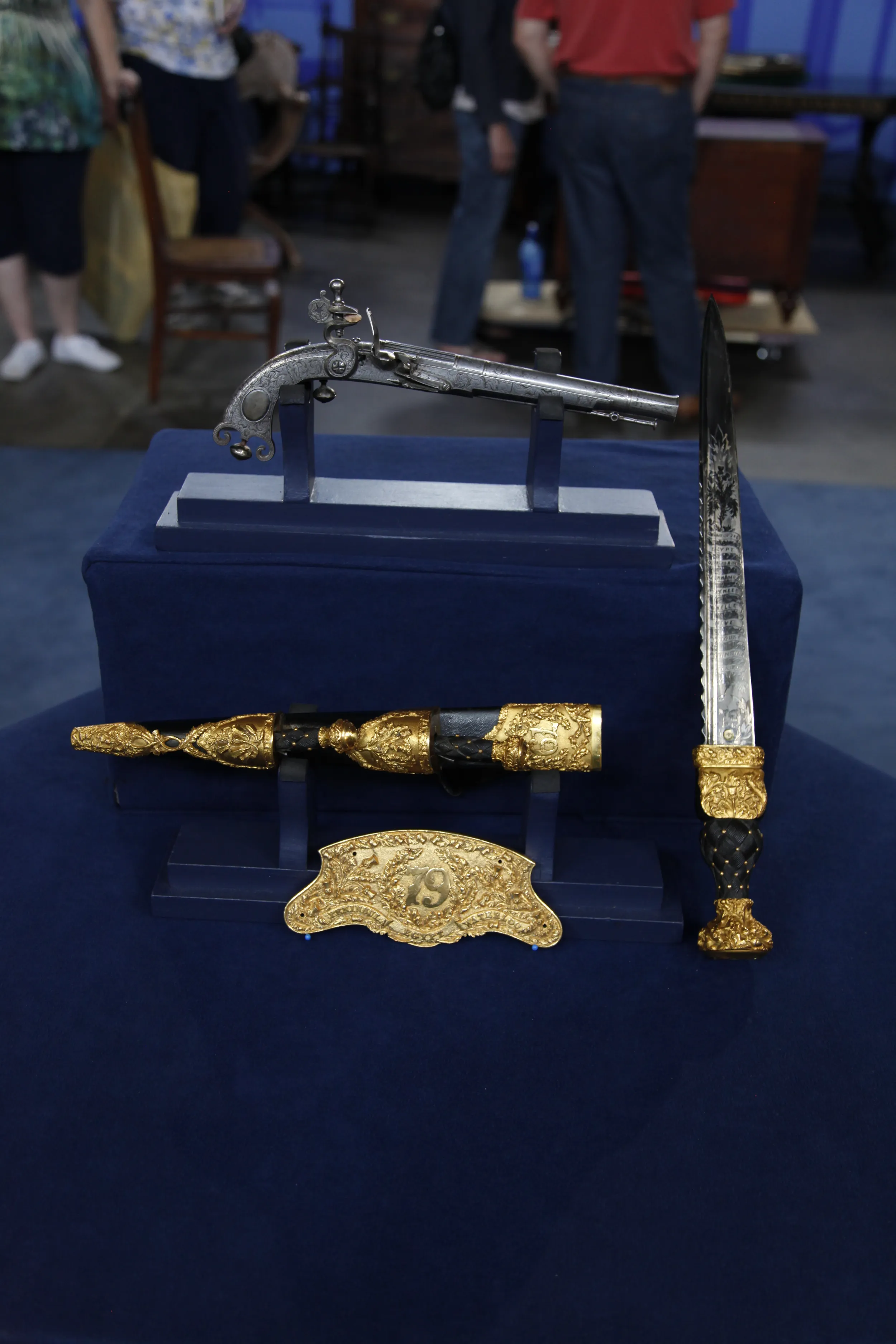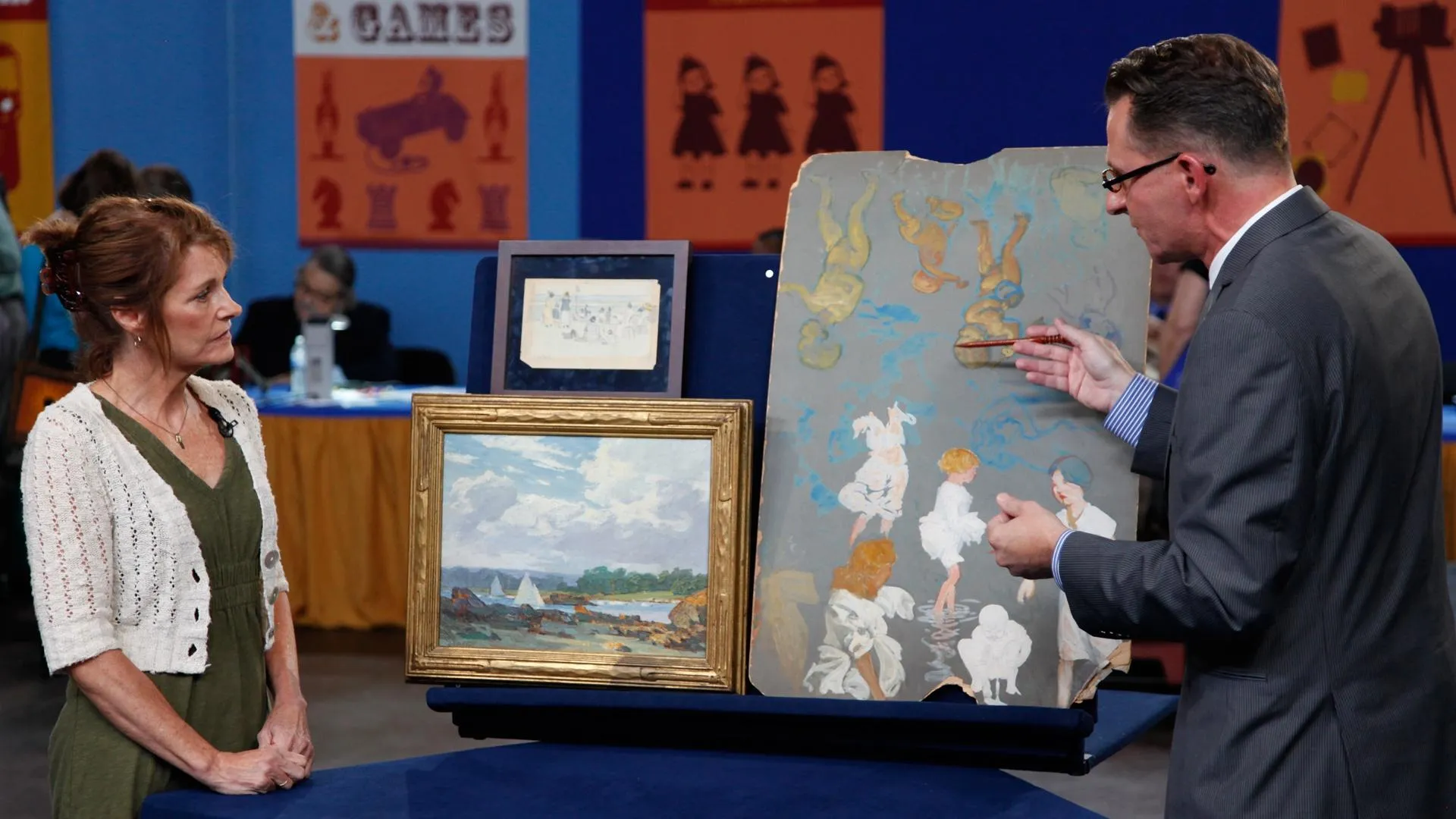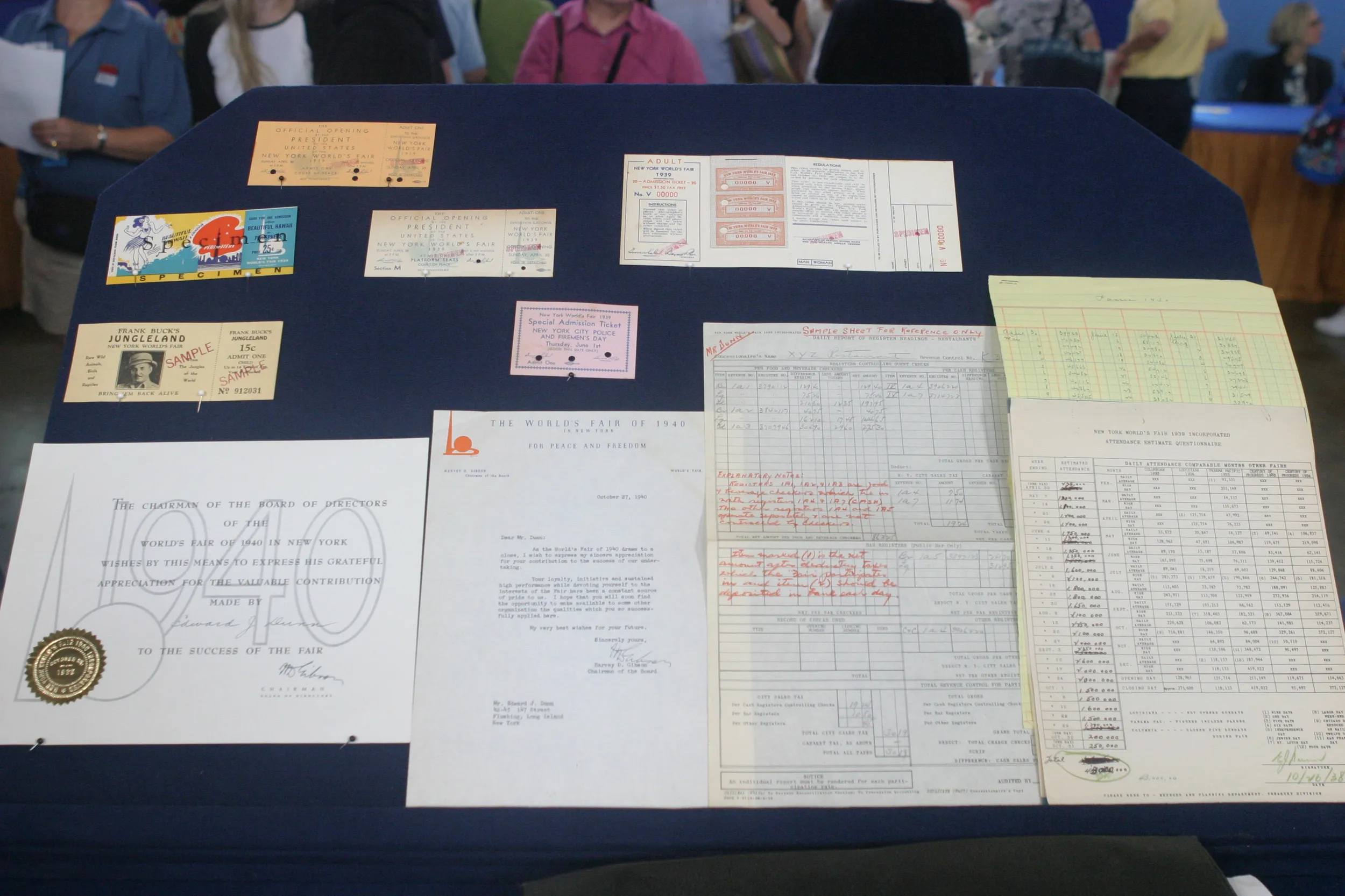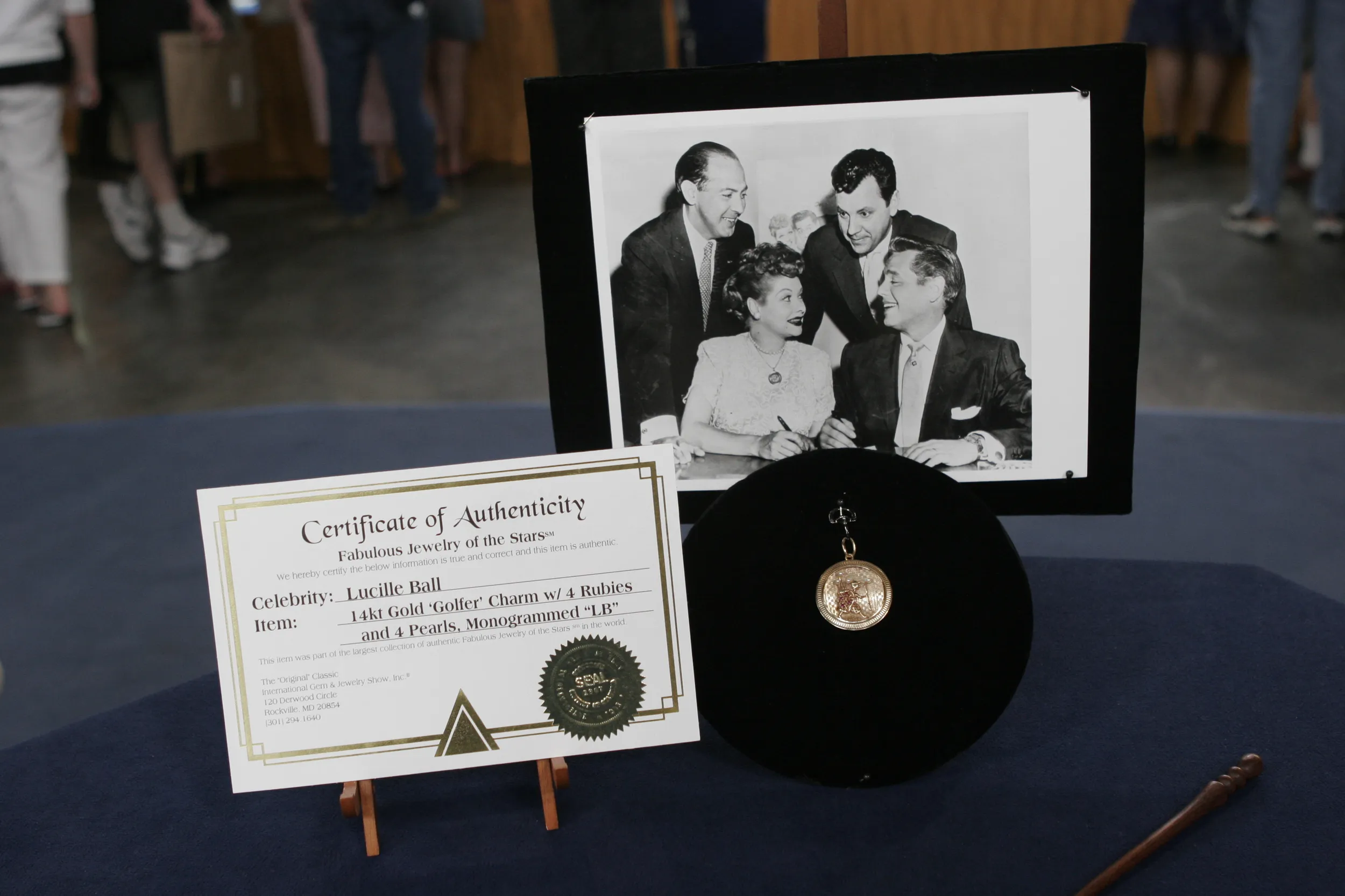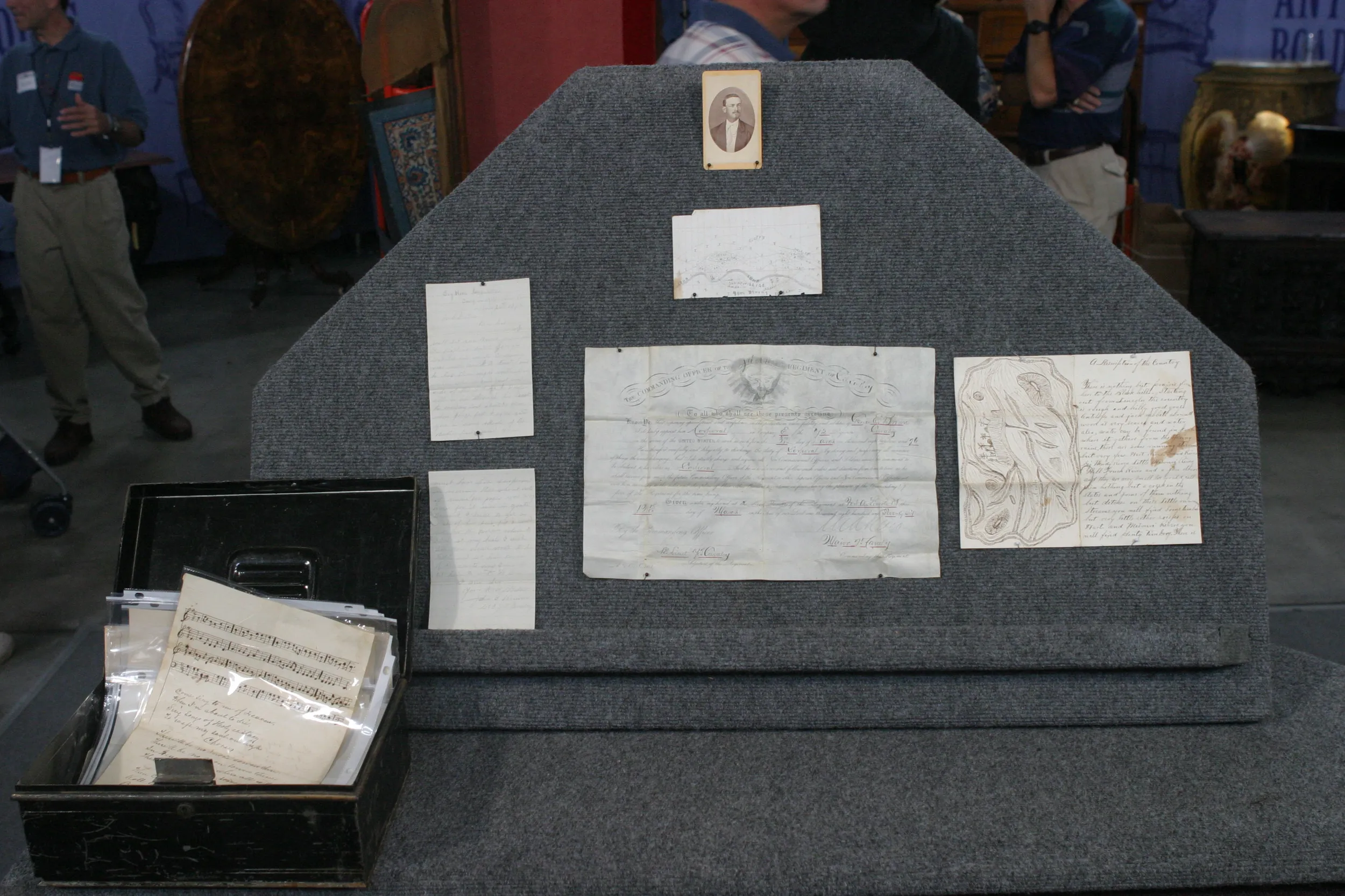GUEST: I brought two things that actually is from my deceased aunt, and it was her husband's. And they had traveled around the world in 1956. And these are two of the items they brought actually for him.
APPRAISER: Was there a Scottish connection to the family?
GUEST: I know they visited Scotland.
APPRAISER: These are Scottish items. We'll take a look at the pistol. It's all metal, it's a flintlock. It's made by a gunsmith Thomas Caddell. And here, it's signed on the breech. He's actually from a family of gunsmiths, all named Thomas, about five of them, so they get a little hard to date. But based on this form, it's certainly from the first half of the 18th century. It's a classic Scottish pistol in that you have this clip on the back so that you'd be able to tuck it into your belt.
GUEST: Okay.
APPRAISER: And then it's well-engraved throughout. And this little bit is actually a desirable little trait and one associated with Caddell. This curling is associated with Scottish pistols in general. So this would be from the first half of the 18th century. Move a little bit forward, and we have what's called a Scottish dirk. The dirk would date from the 19th century, probably even the second half. So there's really about a 100-year difference between the two. Now, dirk is basically a fancy name for a type of a dagger or a knife that evolved really from a utilitarian item to something that became very important to ceremonial purpose for the Scottish military. It would have been worn for dress. All Scottish Highland regiments would have worn a dirk. This particular one is from the 79th Highlanders. You have gilt bronze mounts. This is often carved in a basket weave kind of design, embellished many times with thistles, as this is. The names represent different battles that the Highland regiment was in. And these all actually are basically Napoleonic period, from Waterloo through Egypt. And then the top is inset with a stone, probably citrine. It could be glass, but many times they're citrine. Now, the bit at the bottom, you know what that is?
GUEST: No, I really don't.
APPRAISER: So this is also from the 79th Highlanders. This is a top portion of a sporran-- the little purse that goes in front of the kilt. And this would be the top part of it. The dirk with the part of the sporran at auction would be $2,000 to $3,000. The pistol, today at auction, by Caddell, with this bit attached, that would be in the $6,000 to $8,000.
GUEST: Really?
APPRAISER: So total, you have here really something like $8,000 to $11,000 at auction. A great Scottish group of items. I'm glad you brought them in.
GUEST: Yeah, I'm glad I did too. Amazed.

